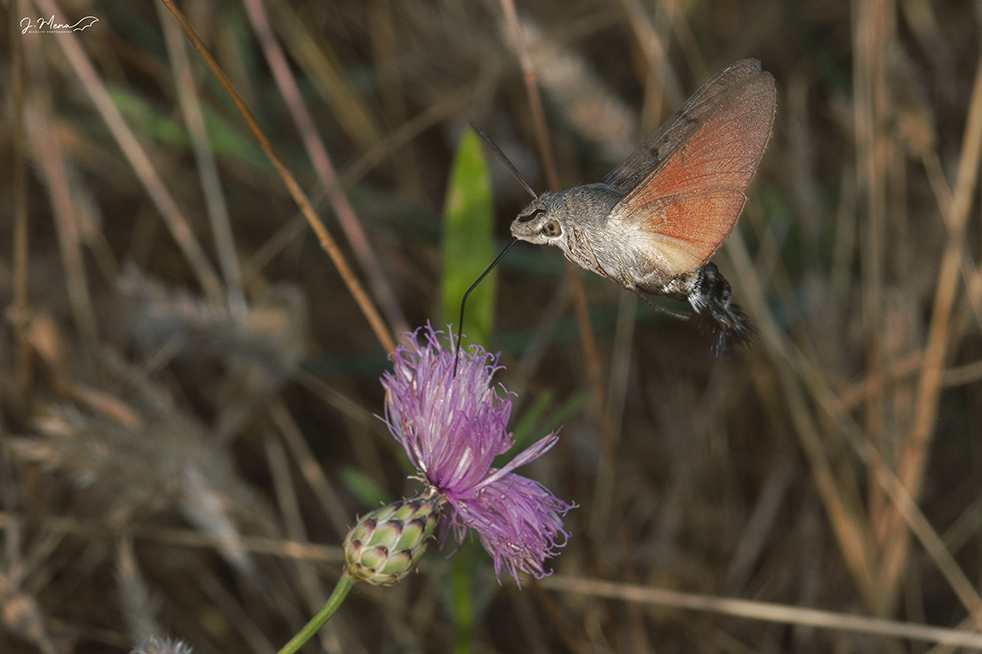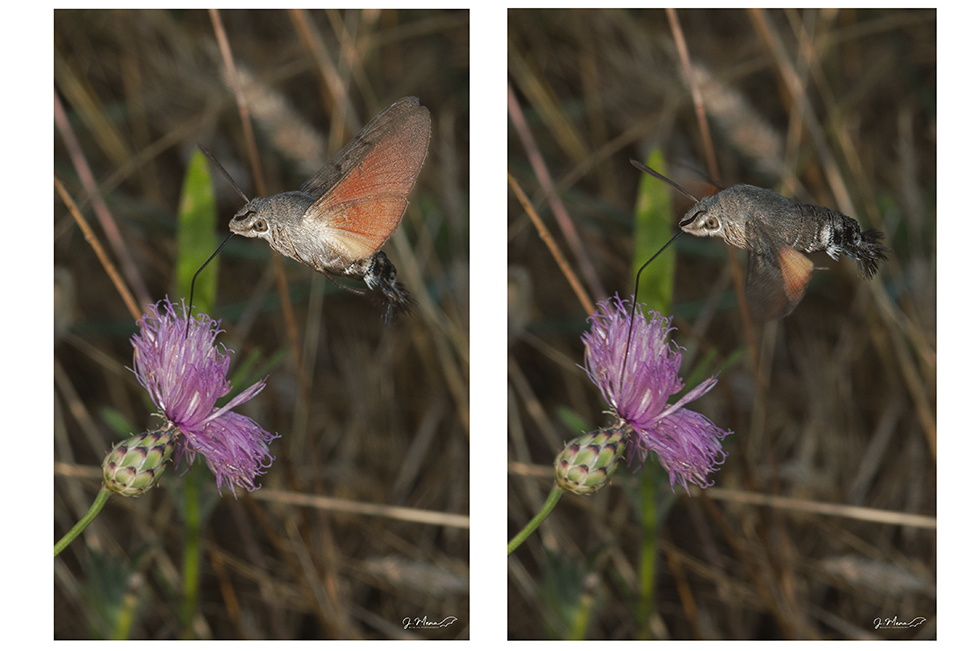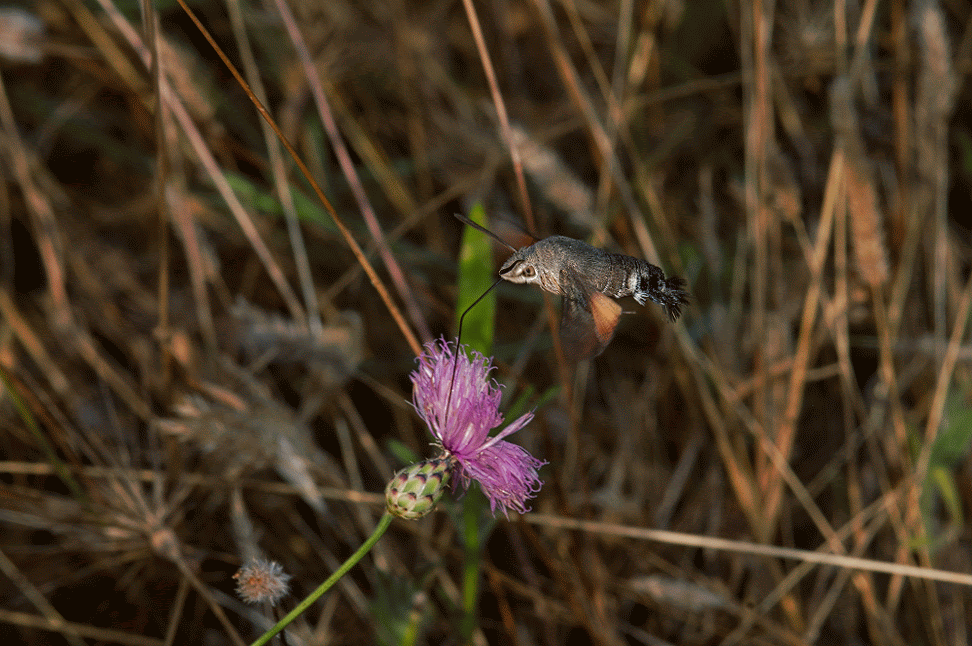Macroglossum stellatarum

The sphinx hummingbird, Macroglossum stellatarum (Carolus Linnaeus, 1758) is a species of ditrisian lepidopteran in the family Sphingidae. It lives in southern Europe, including the Iberian Peninsula, northern Africa and central Asia, India and Indochina. It receives its name from its flight and way of feeding, which are similar to those of the hummingbird.
The wingspan is 40-45 mm. The front ones are brown with black lines and points and the rear ones are orange. The abdomen is black and white on the side, with silks in the shape of a bird’s tail.
It is a migratory species, but generally does not survive the winter in cold regions. It has diurnal habits like many species of this family. The adult feeds on nectar from plants of genera such as Viola, Verbena or Primula. Its trunk, to drink nectar, is almost the same length as its body and extends uncoiling from its mouth, similar to that of a chameleon.

They remain suspended in front of the flower, frantically beating their wings at a rate of 85 times per second, which causes a characteristic buzz that gives them away. In turn, it has very large eyes, providing it with a large field of vision in its rapid movements at a speed of about 60 km/h.

Taking advantage of some photographs from a while ago, I chose two consecutive files of a sequence taken in a meadow near the top of the Caroig peak, to recreate an animation of its peculiar and interesting way of feeding.

